 |
 |
 |
| |
A5340: BRIEF ATI DOES NOT ALTER THE SIZE OR COMPOSITION OF THE LATENT HIV-1 RESERVOIR
|
| |
| |
Download the PDF here
Reported by Jules Levin
CROI 2018 March 4-7 Boston MAKatharine J. Bar1, D. B. Salantes1, Yu Zheng2, Felicity Mampe1, Subul A. Beg3, Jun Lai3, Randall Tressler4, Richard A. Koup5, James A. Hoxie1, Mohamed Abdel-Mohsen6, Edgar T. Overton7, Robert Siliciano3, Janet Siliciano3, Pablo Tebas1
1University of Pennsylvania, Philadelphia, PA, USA,2Harvard University, Cambridge, MA, USA,3Johns Hopkins Hospital, Baltimore, MD, USA,4NIH, Bethesda, MD, USA,5Vaccine Research Center, NIAID, Bethesda, MD, USA,6Wistar Institute, Philadelphia, PA, USA,7University of Alabama at Birmingham, Birmingham, AL, USA
from Jules: some neurologists think an ATI may cause affects on brain and CNS but its uncertain.
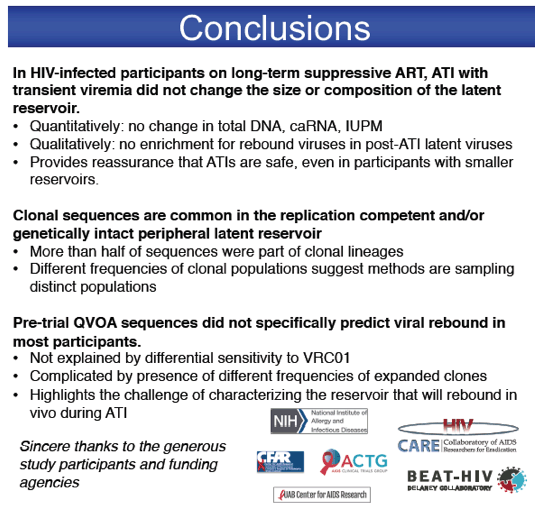
Program Abstract:
The effect of an analytical treatment interruption (ATI) on the latent reservoir remains unknown. We evaluated the impact of transient viremia on the latent reservoir in participants who underwent an ATI in A5340, a clinical trial investigating the effect of VRC01 during ATI. We also assessed the relatedness of viruses sampled pre-ATI and at rebound.
We quantified total HIV-1 DNA and cell-associated RNA in CD4+T cells and replication competent virus by quantitative virus outgrowth assay (QVOA) in resting memory CD4+T cells from leukopharesis samples collected pre-ATI and 6 months post-ART resuppression in 9 participants. Single genome sequencing-derived gp160 env sequences from plasma virus obtained pre-ART, at first detectable rebound, and from pre- and post-ATI QVOA cultures were analyzed phylogenetically. Select envs were cloned and tested for VRC01 neutralization sensitivity.
Participants median ART duration prior to ATI was 4.7 years (range 3.6 to 14.5). The median duration of viremia during ATI was 5 weeks (range 4 to 6) and participants were suppressed on ART for a median of 34 weeks (range 23 to 44) prior to post-ATI sampling. Total DNA, cell-associated RNA, and infectious units per million cells by QVOA were not statistically different pre- and post-ATI (P>0.3, Wilcoxon signed rank test), with median log10 change of 0.3 copies, 0.08 copies, and -0.05 infectious units per million cells, respectively. In each participant, pre- and post-ATI QVOA sequences fell within the pre-ART plasma phylogeny, but did not specifically align within rebound lineages. Expanded clones comprised 30% to 95% of participants' reservoirs, with similar frequencies pre- and post-ATI. Thus, sequences showed no evidence for enrichment of rebound viruses post-trial and pre-trial QVOA viruses failed to predict the identity of rebound virus. Pre-ART, rebound and QVOA Envs for each participant had similar IC50s to VRC01.
Quantitative and phylogenetic analyses suggest a brief ATI does not expand the latent reservoir. While clonal QVOA populations comprised a substantial fraction of replication competent peripheral latent virus, they did not rebound in vivo upon ATI despite similar VRC01 sensitivities. Results provide reassurance for participants of clinical trials employing ATI and highlight the challenge of accurately characterizing the full range of the replication competent latent reservoir that reactivates in vivo.
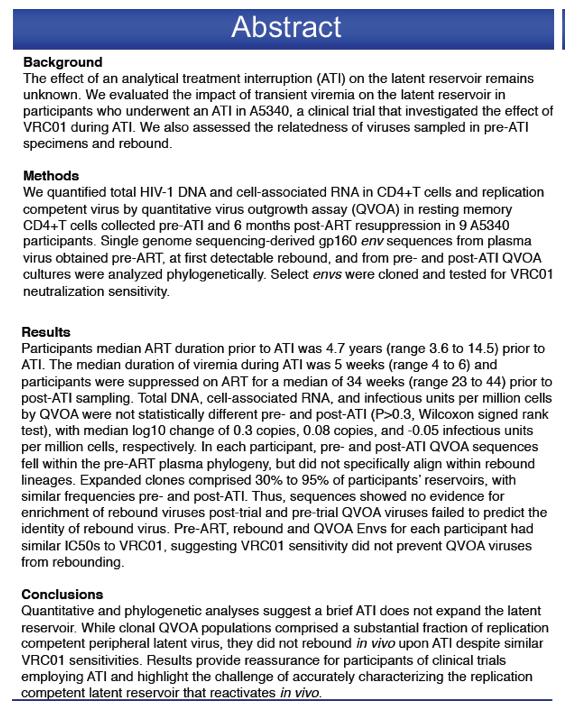
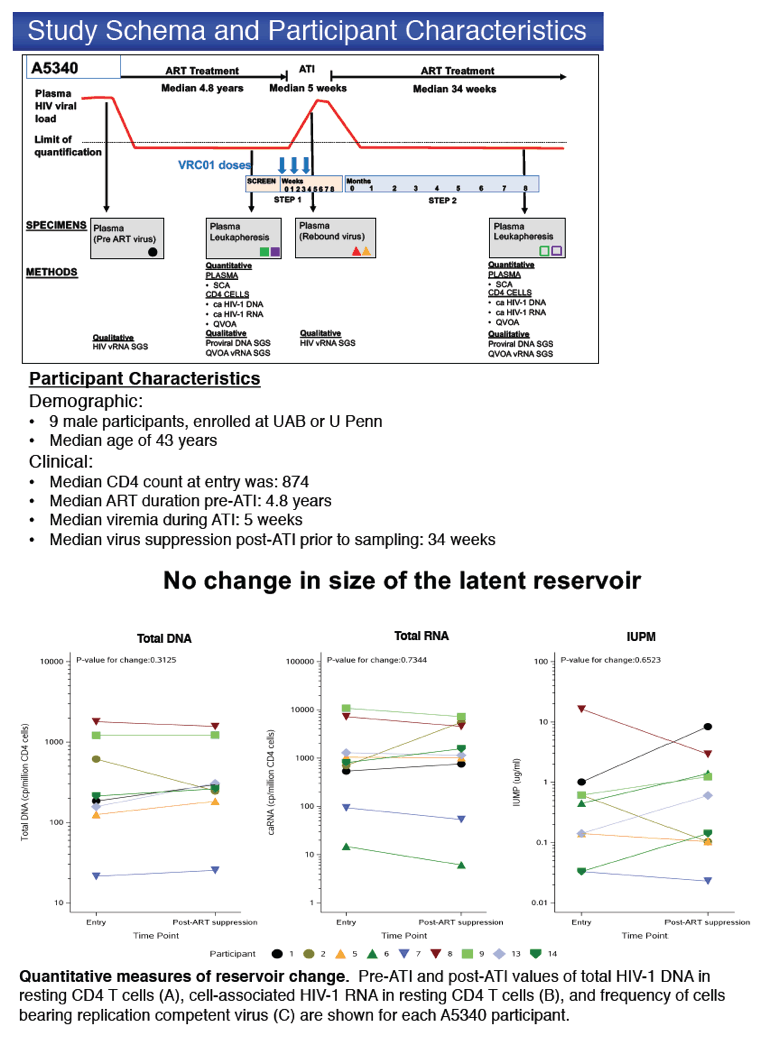
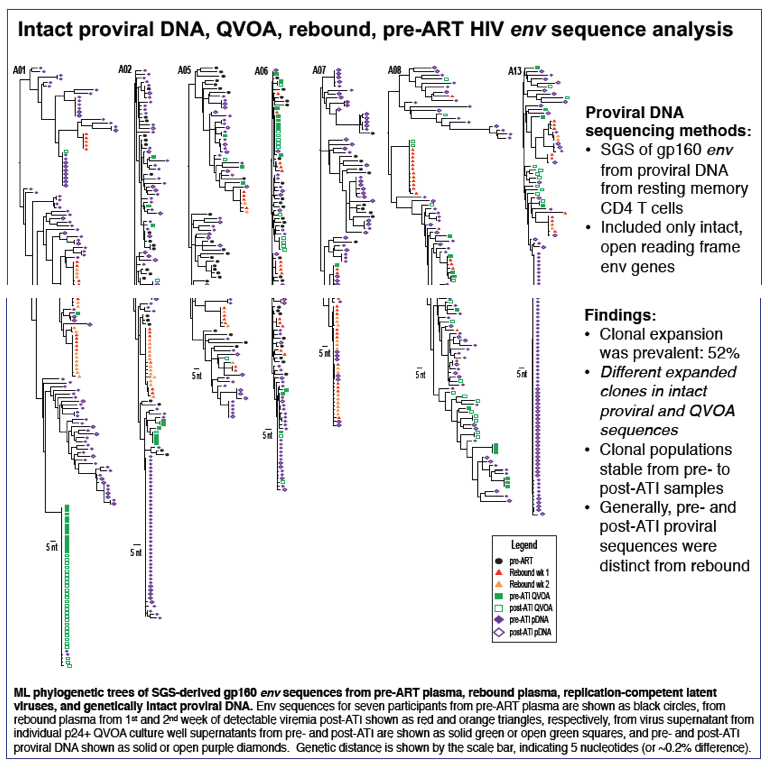
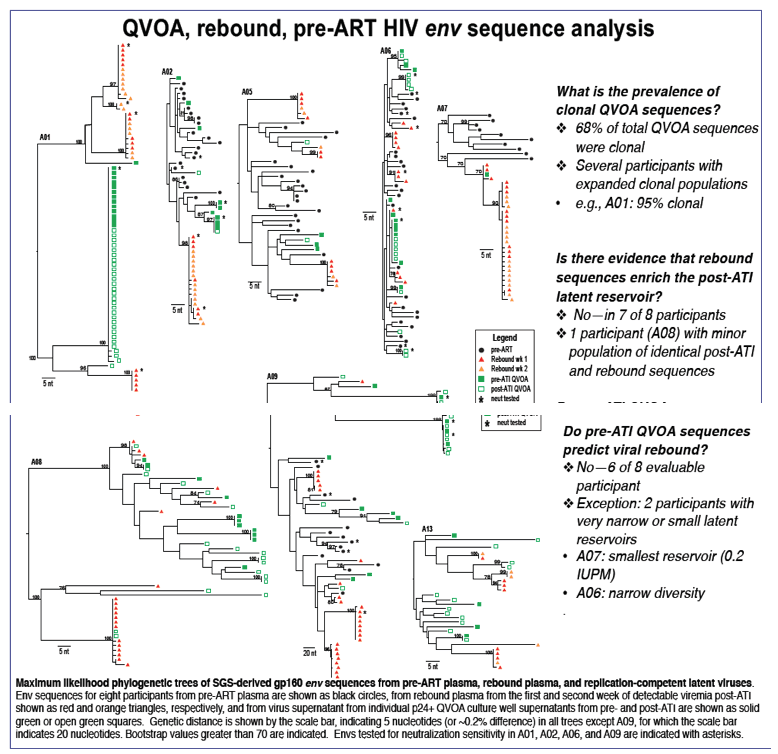
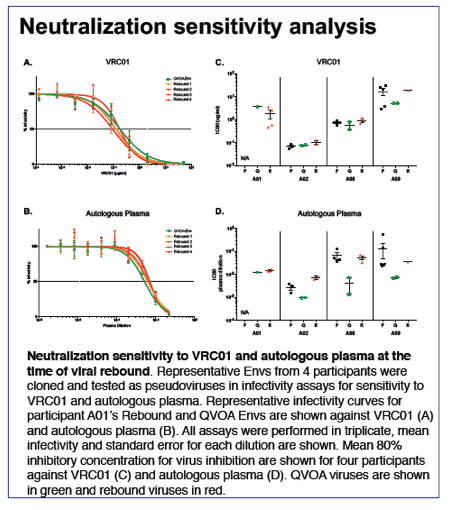
|
| |
|
 |
 |
|
|